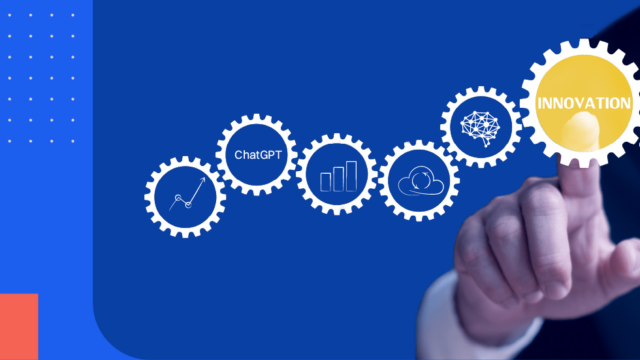
What is an Employee Benefit Plan Audit?
Here’s your checklist for conducting an Employee Benefit Plan audit.
Employee benefits are a key part of talent retention. In a 2021 survey on the Great Resignation, 43 percent of employees said poor benefits were one of the reasons they left a company — with 23 percent saying benefits were a major reason why they left. This means that companies that fail to provide valuable benefits to employees might notice higher rates of turnover than their competitors.
However, outside groups are also concerned about employee benefits. Regulators want to make sure employers are actually providing the benefits they claim and that they keep up with legal requirements to support their employees. That’s why, to track the value and accuracy of current employee benefits, auditors can — or in some cases, must — conduct an employee benefit plan audit.

Is an EBP audit required?
The Department of Labor (DOL) creates laws to protect employees. Companies are required to provide certain benefits to workers and need to follow through with the benefits they claim to offer. To make sure companies are providing the right benefits, the DOL requires organizations to audit their benefit programs through Form 5500.
Certain factors can trigger a Form 5500 EBP audit. These include:
- Blank line items on employee benefit forms;
- A high drop in benefit participants from one year to the next;
- Employee-paid fees for benefits;
- Consistent late deposit of employee deferrals;
- Inconsistencies in 5500 schedules.
Organizations with at least 100 plan members are required to run audits. If an EBP is compliant with the DOL, the company can continue to offer its plan and operate as normal. However, if the audit finds the company isn’t compliant, the organization needs to correct its plan and potentially make amends to employees.
Identify the type of EBP audit needed
The type of audit needed will depend on the proposed plan size, complexity, and unique risk factors related to the business. A full employee audit may not be necessary for every perk or benefit offered. For example, a company might exclusively need to audit retirement plans without having to audit employee healthcare benefits. Further, changing legal requirements can also trigger an audit of all or some employee benefit plans, as the DOL wants to make sure companies are keeping up with new laws and regulations.
Types of EBP audit
The American Institute of Certified Public Accountants (AICPA) has several resources for auditing employee benefit plans. Here are a few types of audits you might encounter in your work as an auditor:
Defined benefit pension plan audits
This audit relates to single-employer or multi-employer pension plans that help people prepare for retirement. It would be triggered when there are major changes to the company’s pension plan or dramatic changes in enrollment, such as after tax season. This audit ensures that employee retirements are being handled effectively, but it can be time-consuming.
403(b) plan audits
This audit looks at retirement plans of employees who work in schools and charitable organizations. This audit is usually triggered after tax season or if the organization is suspected of mismanagement. Auditors can help non-profits and schools stay compliant — especially organizations with limited resources that may have difficulties completing audits on their own. However, these audits are important because employees invest their own money into these plans and trust their employers to match them.
Employee stock ownership plan (ESOP) audits
These audits are relevant for companies that offer stock options to employees. An ESOP audit might be triggered if there is a drastic change in the number of employees enrolled. These audits ensure companies are offering fair stock options that could be lucrative in the future if the organization is profitable.
Healthcare and wellness benefit audits
The DOL will audit the healthcare offered by employers, as well as the value of other wellness perks like gym stipends and employer-provided counselling services. These audits enforce compliance with legislation related to healthcare benefits and may occur when healthcare laws change. This audit might occur if the company grows quickly and needs to offer healthcare to employees.
As an auditor, you’ll either take a high-level view of the benefits plans to be scrutinized or request specific documents on how the plans are managed. For example, there’s a page on the AICPA site that helps plan auditors understand cybersecurity risks in employee benefits, as well as discuss and explain these risks with plan clients.
Prepare for the EBP audit
Organization is the best way to prepare for any audit. Most audits require clear documentation provided in an explicit order so objective reviewers can confirm that you’re compliant. The more disorganized a business is, the longer the audit will take and the more problems will likely arise. Here are a few steps you can take to prepare for an audit:
- Save documents in one place. Companies and auditors should consider investing in cloud software, such as Caseware Cloud, that keeps information secure, organized, and visible to auditors.
- Develop clear lines of communication. Identify who needs to be involved in the audit and how each party will communicate with the next.
- Create checklists that track the project. Project management tools can help identify which aspects of the audit are complete and which ones are in progress. Remember that many of these auditing tasks can be automated with the right tools, such as Caseware’s OnPoint EBP solution.
Though external auditors are key to conducting an EBP audit, they should advise their clients to document the process internally. Doing so will help make compliance during future audits easier.
Conduct the EBP audit
With the right plans in place, auditors can conduct EBP audits smoothly and thoroughly, despite how long this process takes and how labor-intensive it can be. These best practices can streamline an audit, ensuring tasks are completed efficiently:
- Act as soon as there are requirements. Even if the deadline is distant, organizations can’t afford to wait to start gathering and reviewing documents. This gives them a buffer if problems are encountered in the audit process.
- Provide communication updates to all parties. Regardless of whether there isn’t any major news, all parties involved in the audit should remain updated, especially if you’re collaborating across departments.
- Nominate a quality assurance specialist. The organization should identify someone who can triple-check documentation before sending it to the third-party auditor. This helps catch errors before the paperwork goes out.
Additionally, auditors should never make assumptions about the audit process or the documents that will need to be provided. Every paper or task should be confirmed and double-checked. Completing the audit thoroughly once will save time and prevent issues from arising with the DOL.
Choose appropriate technology for the EBP audit
Audits can become complicated, requiring several different forms and types of documentation. The larger the organization or the more complicated the benefits, the more documents will be required for the audit. Fortunately, digital tools can make it easy to find, upload, save, and submit documents — auditors can turn to solutions like OnPoint EBP to increase their efficiency and accuracy as well as decrease stress during the auditing process.
Let the EBP audit results help improve your organization
Auditors should stress to their auditees that they shouldn’t view a benefit plan audit as just a regulatory requirement to keep up with DOL guidelines. Rather, they can also use this audit as an opportunity to review benefits and make sure they’re competitive, potentially improving the satisfaction of current employees while helping attract new ones. In doing so, auditors can both prove their value to their clients and create a greater likelihood of return business in the future.








